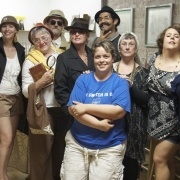Thanks to my job, I’ve spent the last several days playing around with data visualizations and infographics. Tonight, I was fiddling around with word-related graphics that require a large block of text to work. I decided to use the first half of Beware the Hawk.*
This was just an exercise to help me learn some technology, but it turned out to be revealing. I wasn’t looking to learn anything about my writing. I figured I knew the words pretty well – I wrote them, yes?
I was surprised to discover that certain words important to the plot of my book don’t actually show up that much in the text, while certain other inane words seemed to have crept into my prose and taken over. Apparently I like to throw the words “look” and “looked” into every possible sentence. My characters do a lot of looking. Also, I like to schedule events for my characters. I’m not punctual in life, but in fiction, arrivals, departures and executions are all planned out. Times are given for almost all events. I’m like my characters’ sadistic cruise director.
The flow chart below (which is nigh unreadable unless you click on it) shows the use of the word “resistance” in the first half of the book. The resistance is kind of an important element of Beware the Hawk, so I was sort of surprised to see that it only occurs 17 times. I thought it was all over the text when I was editing it. I was also shocked to see that “hawk” only occurred twice, which is why I’m not posting any code for a “hawk” word tree. It looked more like a word twig.
So what words do occur the most? Here’s a cloud that shows all the words that were used in the first half of the book. The biggest words occur most frequently. The smallest ones are the rarest.

Well, would you look at that. Leo is all over this book, as is the word "like," because apparently, I write like a valley girl.
Lastly, here’s a phrase net, which is a kind of word infographic that I’m just beginning to explore. This graphic shows all the words I link with the preposition “at.” I think it paints picture that accurately describes the book.
I think that this sort of data visualization could be valuable to any writer, if only to expose their writing habits. So, if you’re interested, writer friends, check these free online graphic generators: Wordle is free and you don’t need to log in. Many Eyes you need a log in for, but it’s worth it. Just don’t go and upload the full text of your unpublished masterwork, because it’s stored and made available to all users.
* I only uploaded the first part of the book because I didn’t think my publishers would be happy if I gave the full text away for free on an infographic generating site.






Kim Kupperman did the word cloud for our workshop pieces. It’s a really cool visual tool for clarifying themes, important characters, etc. Sometimes it didn’t work (The and Like would be large) but once in a while it would give you some insight into what’s really important.
I had no idea that you guys were rocking the wordcloud over in Non-Fiction. She’s right. It does work well for identifying both themes and bad habits.